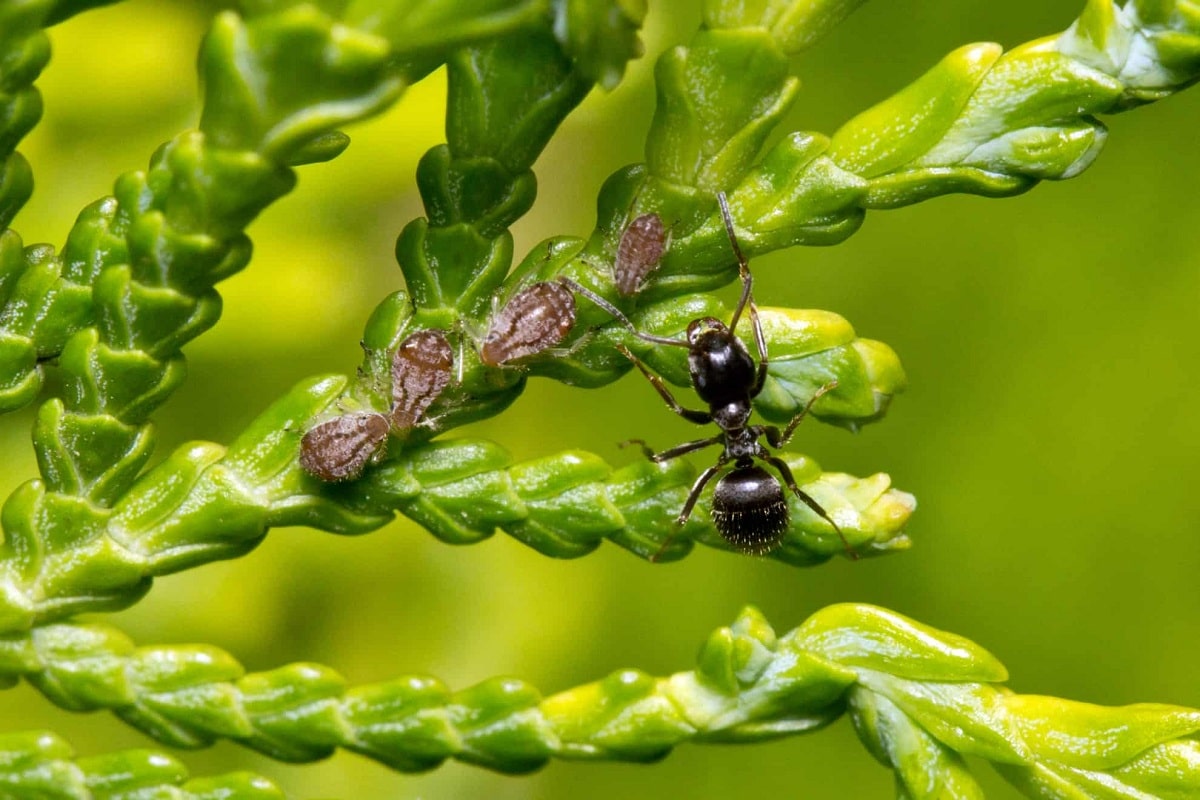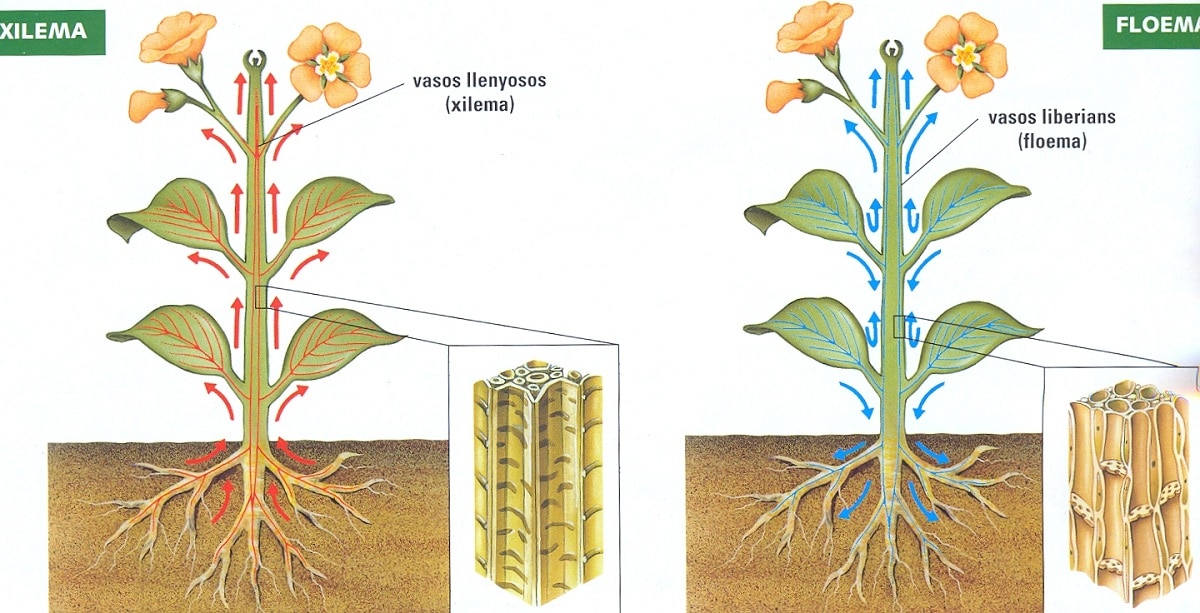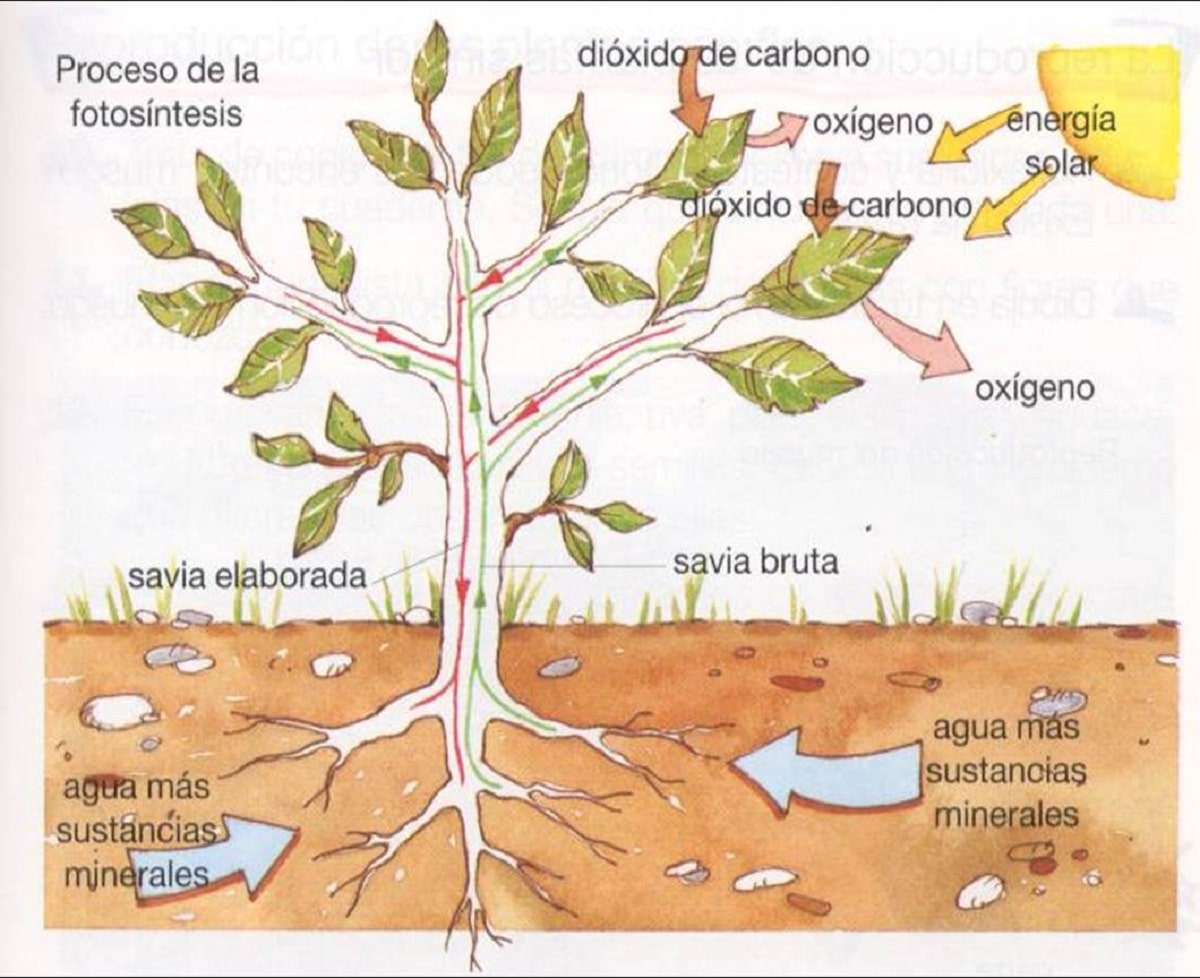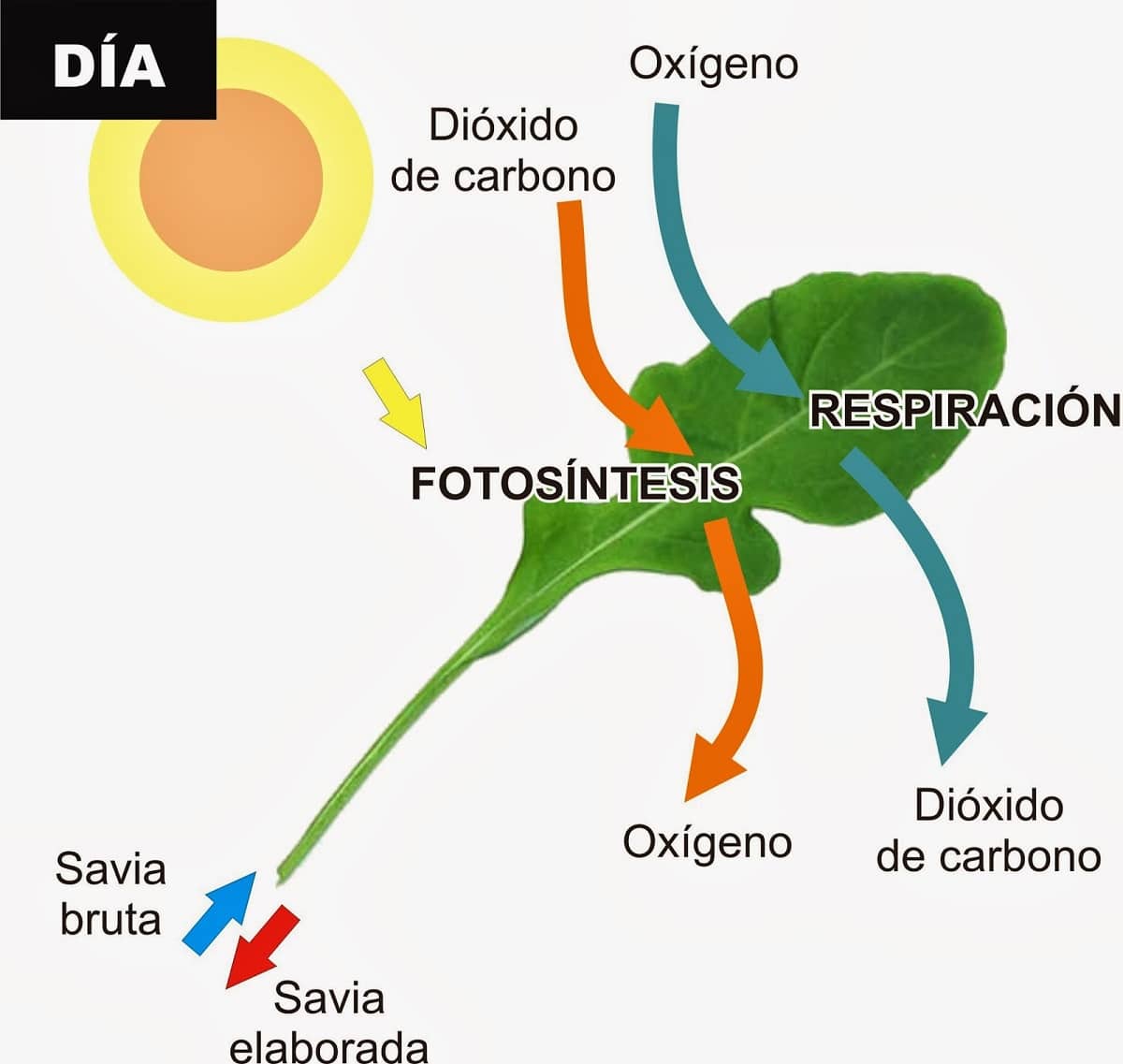
Surely as a child the school taught you about the raw sap and processed sap of the trees. The raw sap is a mixture of water and mineral salt that is used for the plant to produce food. The objective is to reach the leaves and this transport is carried out from the stems through very fine tubes called woody vessels. After a production process, the elaborated sap is generated, which is what is used to feed the plant.
In this article we are going to tell you everything you need to know about raw and processed sap.
What forms the raw sap and processed sap

Sap is called a liquid substance that is transferred through the conductive tissue of a plant, and the conductive tissue of a plant is one of several plant tissues that exist. Due to the production of sap, plants can create their own food sources. But what forms the sap? Plant sap contains many mineral salts, amino acids, and hormones. However, this liquid substance is composed mainly of water, especially 98%, although this may vary from one species to another.
There are two types of sap found in plants: raw sap and processed sap. The characteristic of the original sap is that it is formed in the roots and is transported through the xylem to the rest of the plant. After the photosynthesis process, it becomes a delicate sap, which is transported from the leaves to the roots by the phloem in the opposite direction.
It is important to know that to promote the growth of our plants, the sap production of most species coincides with the moment when the temperature rises. For this reason, most of the pruning is done in winter to avoid the loss of this vital material for plant life.
PREMIUM QUALITY

The sap is transported by the conductive tissue of the plant: xylem and phloem. Each of them is responsible for transporting the two existing saps:
- Raw sap: It is a liquid substance produced by the roots that absorbs water and mineral salts. This is transported from the roots to the leaves in wooden containers.
- Elaborated SAP: It is the result of the transformation of the original sap after the photosynthesis process. Due to the phloem, it is transported in the opposite direction, transporting food from the leaves and stems through the conducting blood vessels until it reaches the roots through the blood vessels. Processed sap is the true food of plants because it contains not only water and mineral salts, but also sugar and plant regulators.
Functions of raw sap and processed sap

As we have mentioned before, it is the real food that plants have. For this reason, we have various types of functions such as the following:
- The main function of the sap is to nourish the plant so that it develops and functions normally.
- The sap is responsible for transporting trace elements and macroelements to the leaves for photosynthesis, thus transporting food to all parts of the plant.
- Once this substance is transformed into processed sap, it can be used not only as plant food, but also as source of food for animals and even humans. In fact, certain types of sap produced by different types of plants are also used for their medicinal properties. For example, birch sap is well known.
- With the help of the sap, plants can improve their own thermal regulation through the transpiration of the leaves and the stems of the plants.
Tour to the top of the trees
Thanks to the xylem, the sap reaches the cup and overcomes the transport by gravity. Through this pipe, the water and mineral salts captured by the roots of the trees from the earth itself are transported to eventually reach all parts of the plant, including the crown.
The xylem and phloem are responsible for transporting the sap. The raw sap that passes through the xylem has a long journey to all points of the xylem and provides the necessary nutrients to the leaves. They are responsible for most of the photosynthesis, thus converting it into processed sap, that is, into carbohydrates. This is transported by the phloem, which is responsible for ensuring the transport of nutrients. Ultimately, this carefully crafted sap will carry food to the rest of the plant through the opposite route.
Differences between raw sap and processed sap
The main difference between them is that the raw is a combination of mineral salts and other substances, while the processed is composed of glucose, water and photosynthetic minerals.
The crude is transported by the xylem, which is composed of dissolved substances such as water, mineral elements and growth regulators. It moves from root to leaf through a sturdy tube. This sap is transferred to the leaves, where photosynthesis is transformed into processed sap. The method of transportation has caused much controversy in the scientific community.
It is transferred from the origin of its formation from the phloem to the root in the green leaves and stems. It is composed of water, sugars, amino acids, vitamins, organic acids, dissolved minerals and plant regulators.
In this case, the hypothesis of pressure flow is accessed as a transport technique for the treated sap. It is carried by the phloem, which it is a kind of vascular plant tissue, that can flow in both directions to transport nutrients to all the areas that the plant needs, be it a photosynthetic organ.
We must remember that trees are essential for life since they are great scrubbers of carbon dioxide, they provide the necessary oxygen so that life can be given as we know it. For this reason, all this way of eating has always had a lot of place in the scientific world. I hope that with this information you can learn more about raw and processed sap.